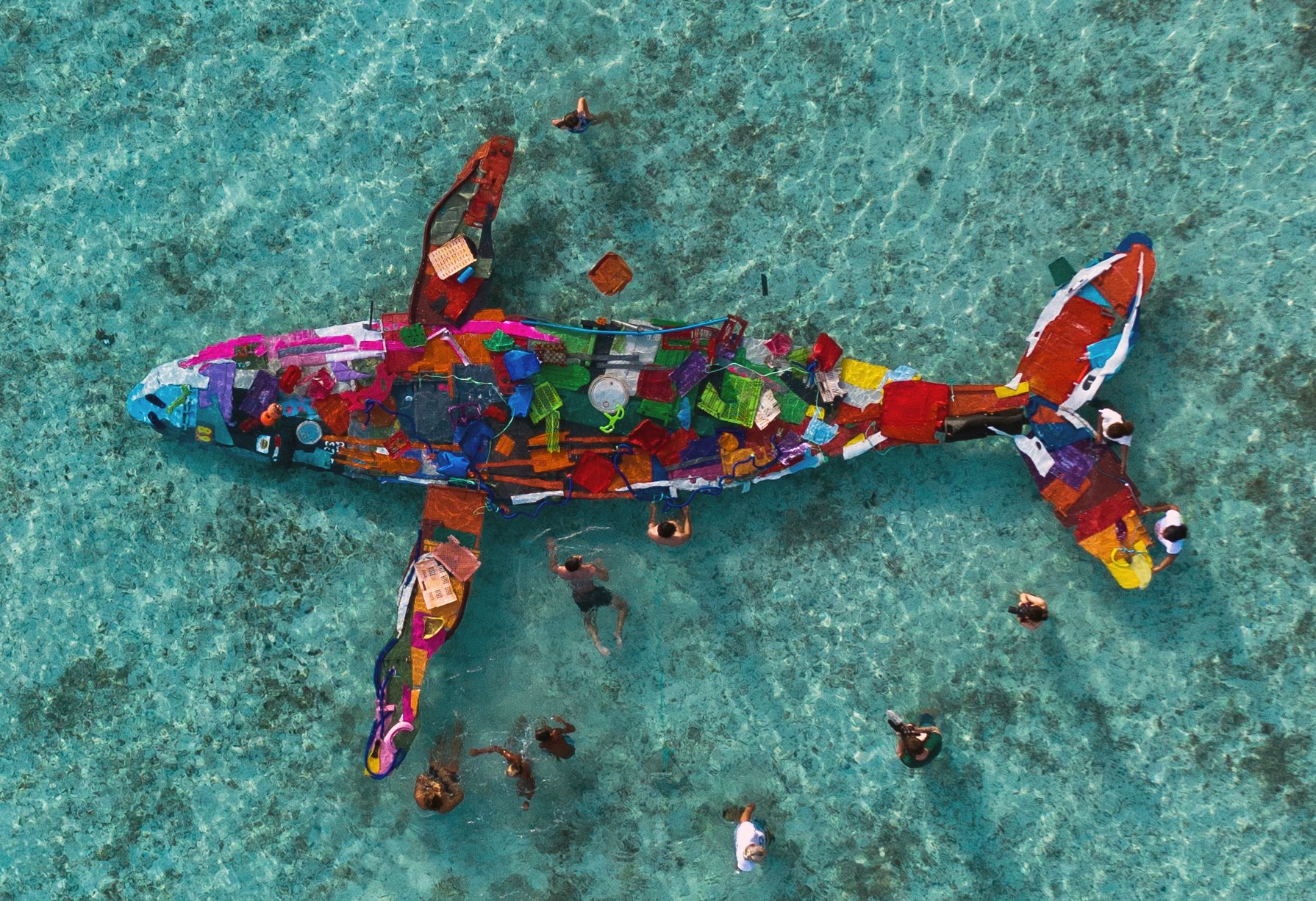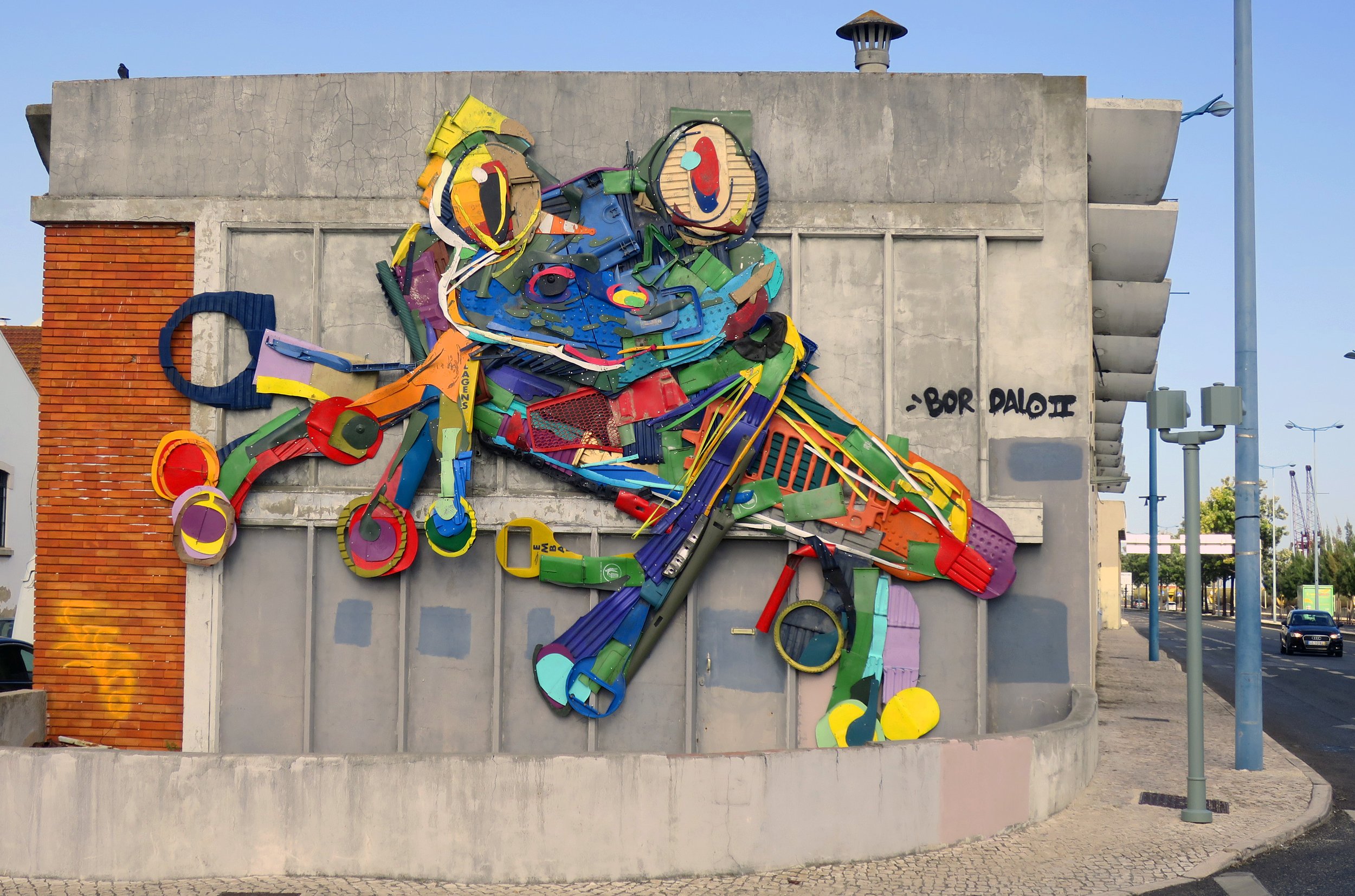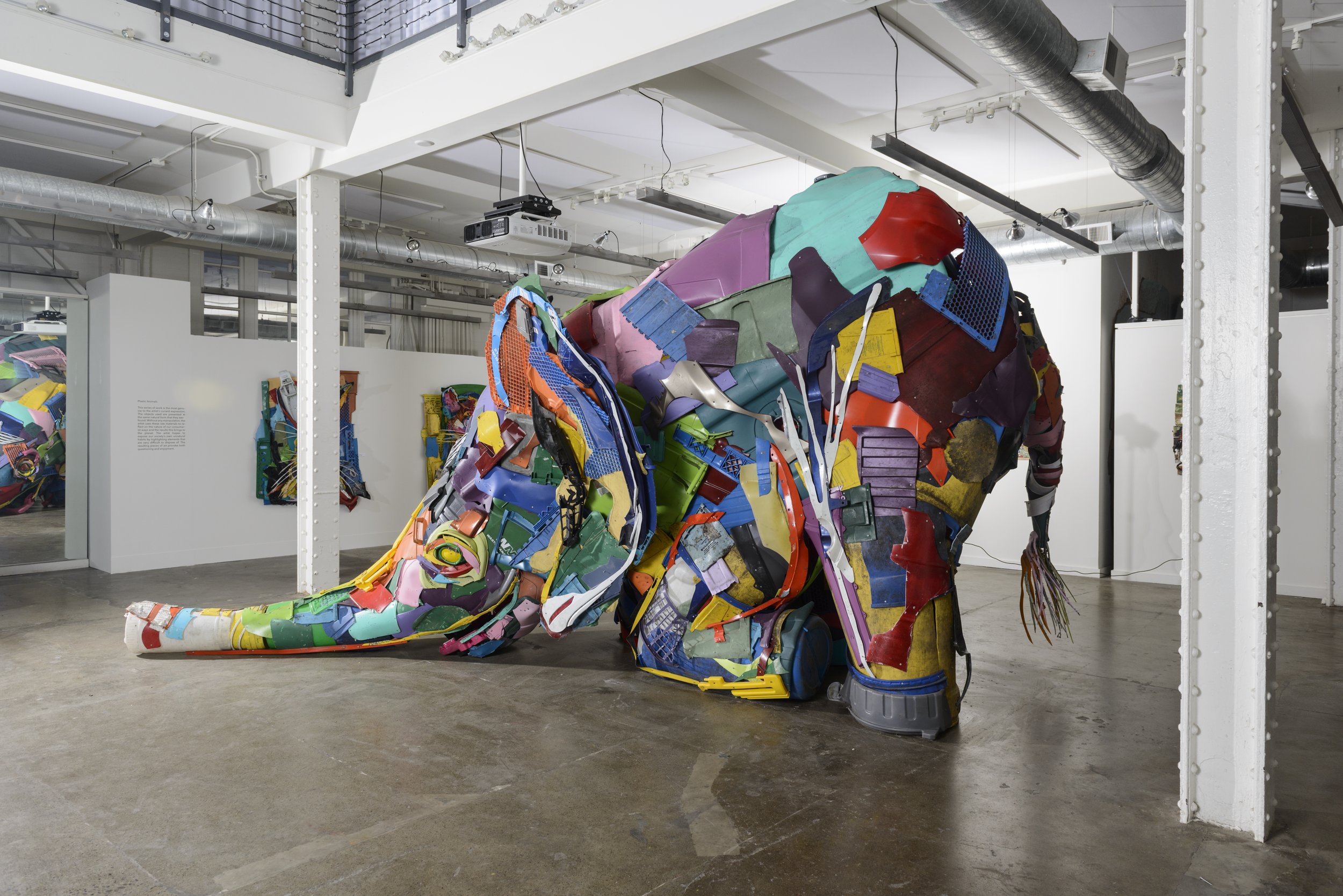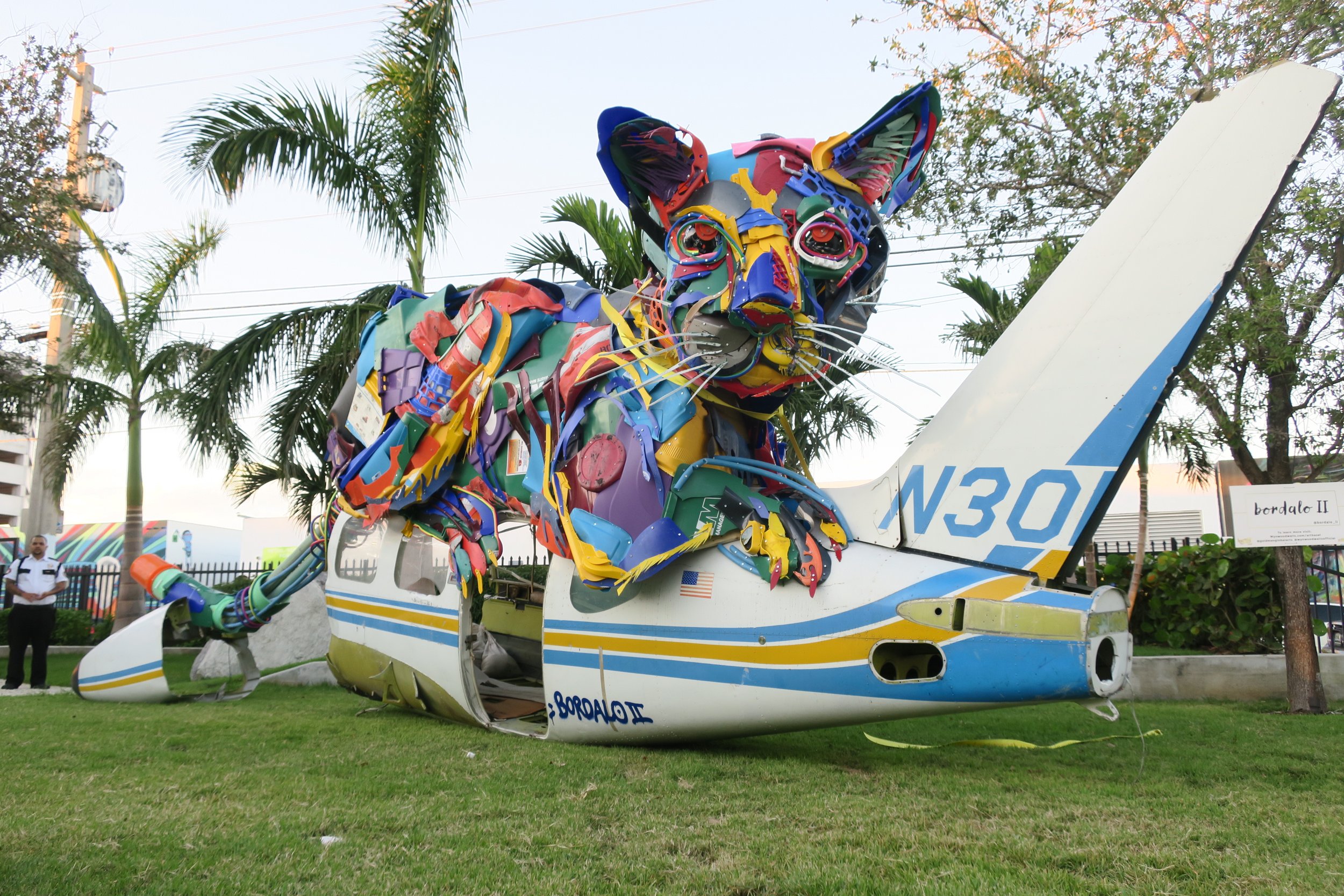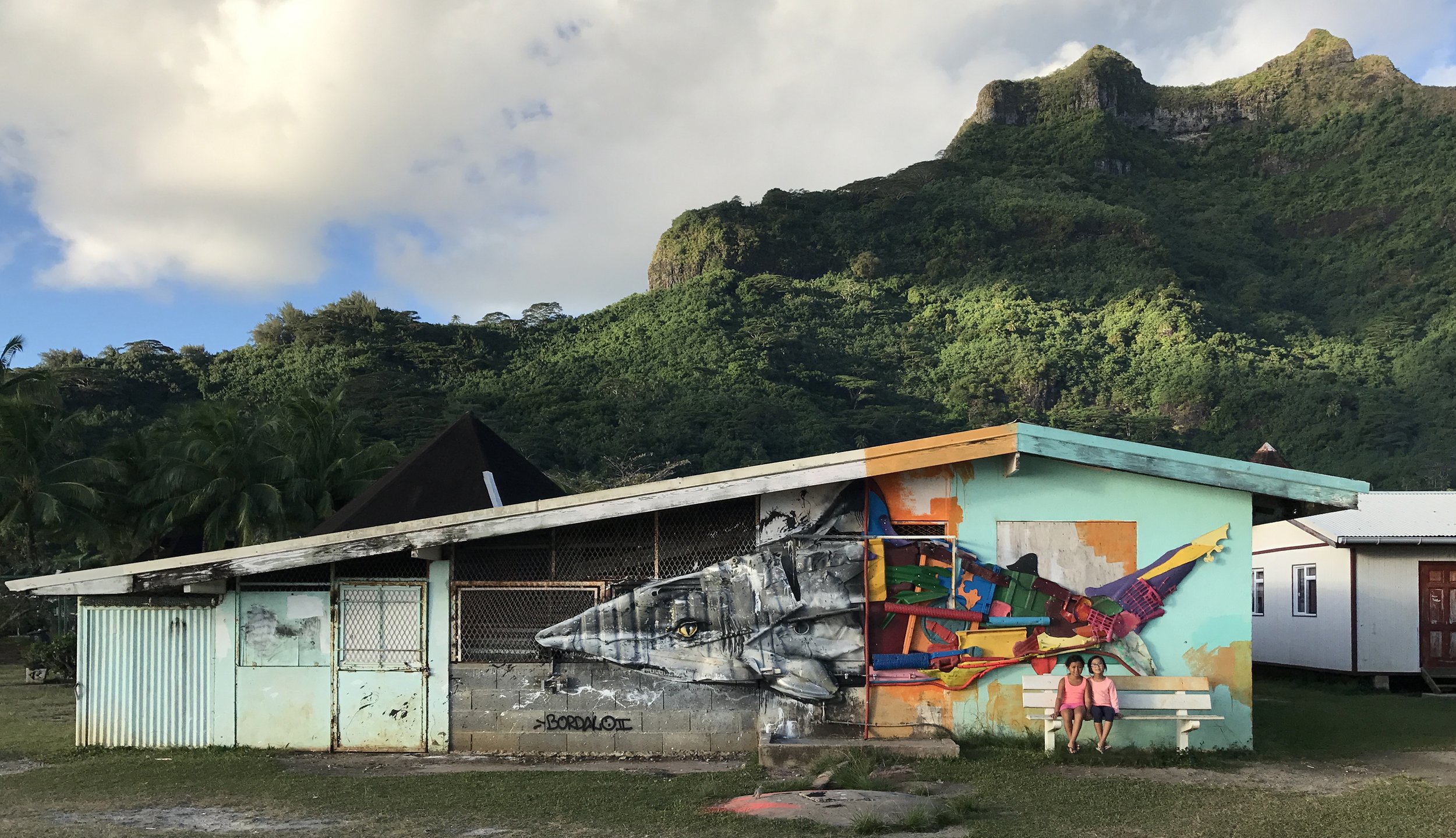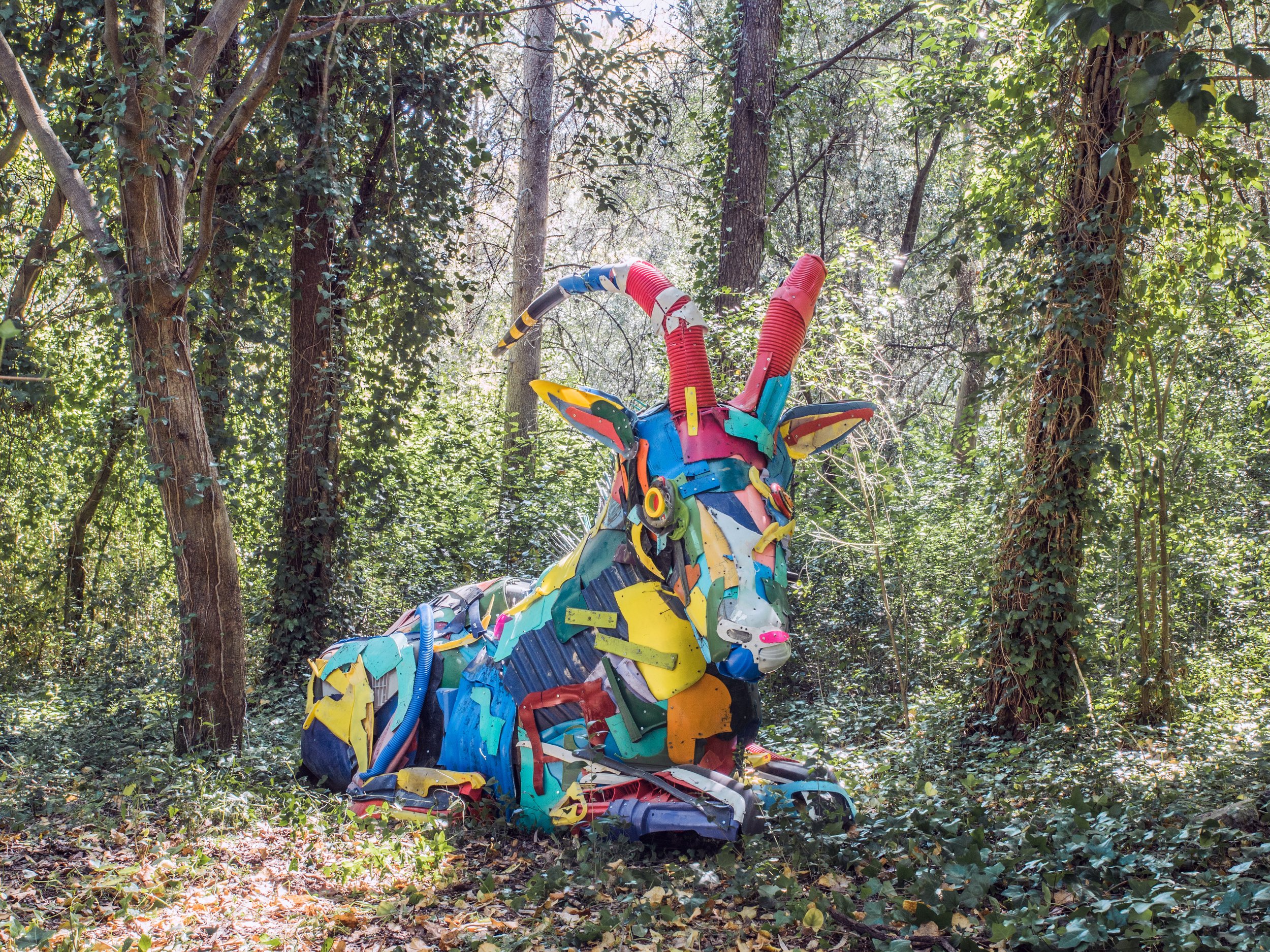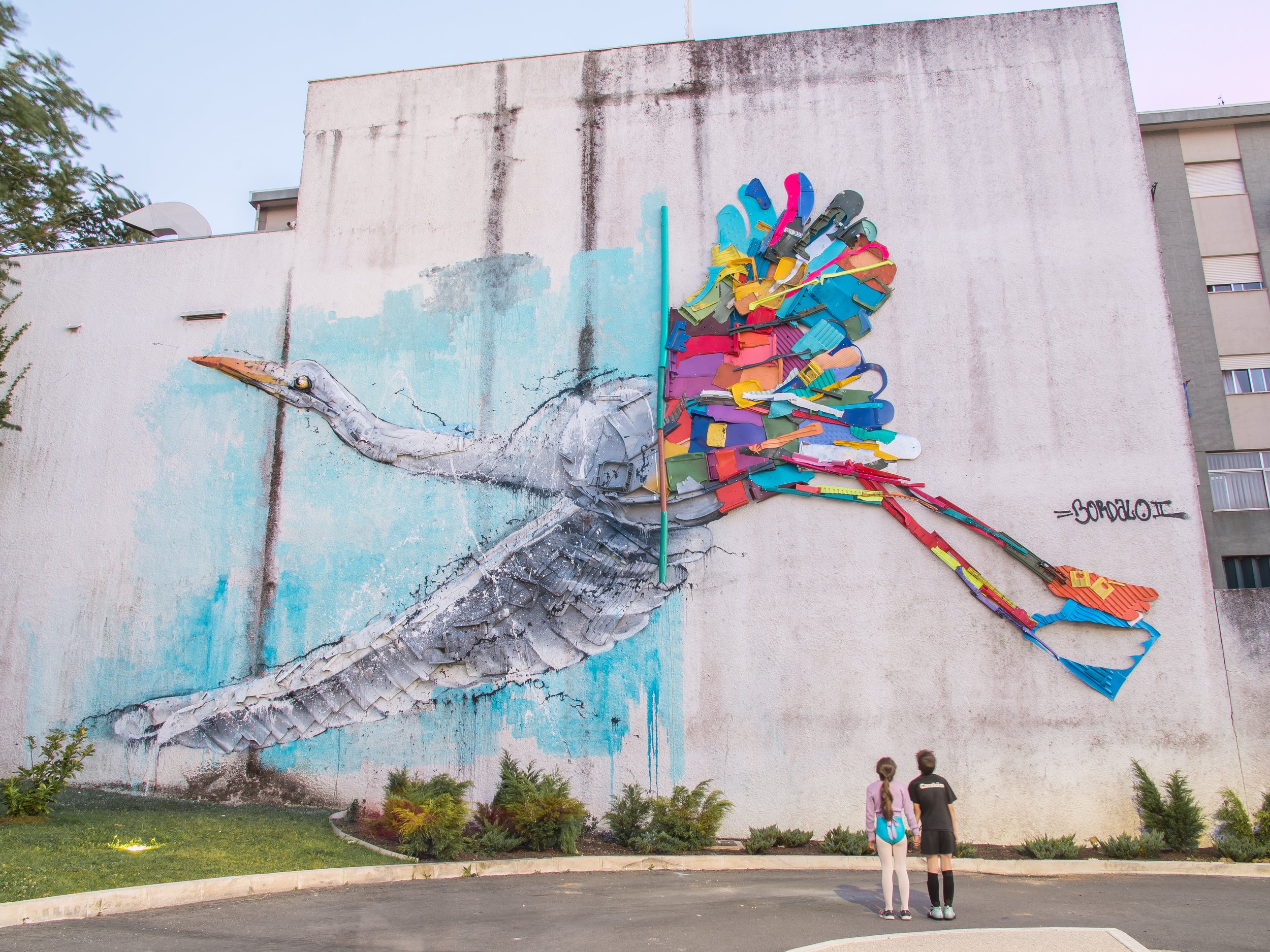Artist Interview: Bordalo II turning trash into art
Bordalo II Lisbon Studio 2018 - photo by Miguel Portelinha
Words and interview by TIM SEYFERT
One man’s trash is another man’s treasure, or so the saying goes, but for Portuguese artist Bordalo II, our trash is his call to arms. With a body of work consisting of murals and installations made entirely from recycled waste, the 36-year-old self-described “artivist” is on a mission to show the true price of over-consumption.
His creations, dubbed “Big Trash Animals”, are featured around the world and depict wildlife made from the very materials that threaten to harm them. His aim? To get people to reexamine their treatment of the planet. Each work is as equally eye-catching as it is thought-provoking - with pieces including a large swallow assembled from litter on a building in Lodz, Poland; a giant grouper created from marine debris on the seafront in Funchal, Portugal, and a 64-foot-high recycled garbage puma on a wall in El Paso, Texas.
“I want people to become aware that our habits are a big part of the world’s problem. The animals I create represent that. Through empathy, I want to cause discomfort, which will hopefully lead people to change.”
Bordalo II (the numeral pronounced “Segundo” and whose real name is Artur Bordalo) draws inspiration from many wells, but none, he said, run as deep as the daily life happening around him. Though his work is meant to disarm, the Lisbon-based artist said it’s often the most innocent who digest it best.
“Humankind always impresses me, not always in a positive way, but it’s a constant inspiration for my work. Most times, I choose an animal local to the place where I’m creating. All the murals are site-specific, so the walls dictate the framework. Curiously, children are the ones who seem to understand my messages the easiest. It always makes me happy when they then explain it to their parents”
Location, as well, often plays a key role in his ideas. Once an idea is formed, the artist and his team start by hitting dumps, abandoned factories and waste management companies. The fruits of these raids yield an array of materials - from damaged bumpers, scrap metal, plastic debris, tires and household appliances. From there, a mural can take one-to-two weeks to complete, while sculptures can take up to a few months. And when it comes to process, it’s a mix of surgical-like planning and spirited improvisation.
“There’s always an end goal. The process is very planned, but there’s always room for freestyle. I always choose the colours and objects I’m going to use at the time I’m working, not beforehand and I never stop until I’m satisfied.”
Portrait of Bordalo II - photo by Raymesh
A typical work involves an outlined groundwork, the assembly of the main shape and the first layers. Then, once the foundation is laid, the piece is simply allowed to go where it needs to. The need to create was instilled at an early age when the now renowned street artist was first inspired to pick up a paintbrush by his grandfather, the painter Artur Real Bordalo, whom he is named after. Growing up in the Portuguese countryside, the young Bordalo spent much of his childhood exploring nature and watching his grandfather work.
“My grandfather showed me it was possible to be an artist. He was a huge influence on me, to never be afraid to pick up a brush or pencil and just start creating.”
With his passion ignited, the budding artist spent much of his early adolescence searching for a voice. It wasn’t until he fell into graffiti that he found one. Fuelled by an incessant desire to express his rebellion, the teenage Bordalo started venturing into the cities where the endless sprawls of concrete became his canvas. His trips to the city also led to an unexpected side-effect – the development of a social consciousness.
A deep and dirty hole under the Euro
“The adrenaline from doing graffiti made it very desirable. Graffiti opens paths through the city’s secret parts, and that was thrilling. When I would go to a city, having grown up around nature, the pollution and consumption seemed so exaggerated. I couldn’t help but start thinking about it as a topic that needed to be brought to light.”
The realisation to use art to air his concerns was followed by a stint at the Faculty of Fine Arts in Lisbon. Though he never completed his course, his time there allowed him to dabble in sculpture and ceramics, an experimentation which led him to ultimately ditch painting in favour of his current medium. Since then, Bordalo II has been channelling his artistry into creating calls for change, with works inciting empathy for the ultimate casualty of pollution – nature
“When people realise these animals are made of waste, the result of our exaggerated lives, which is consequently destroying the world – that’s what I would like to call attention to, leading people to ultimately look at themselves.”


